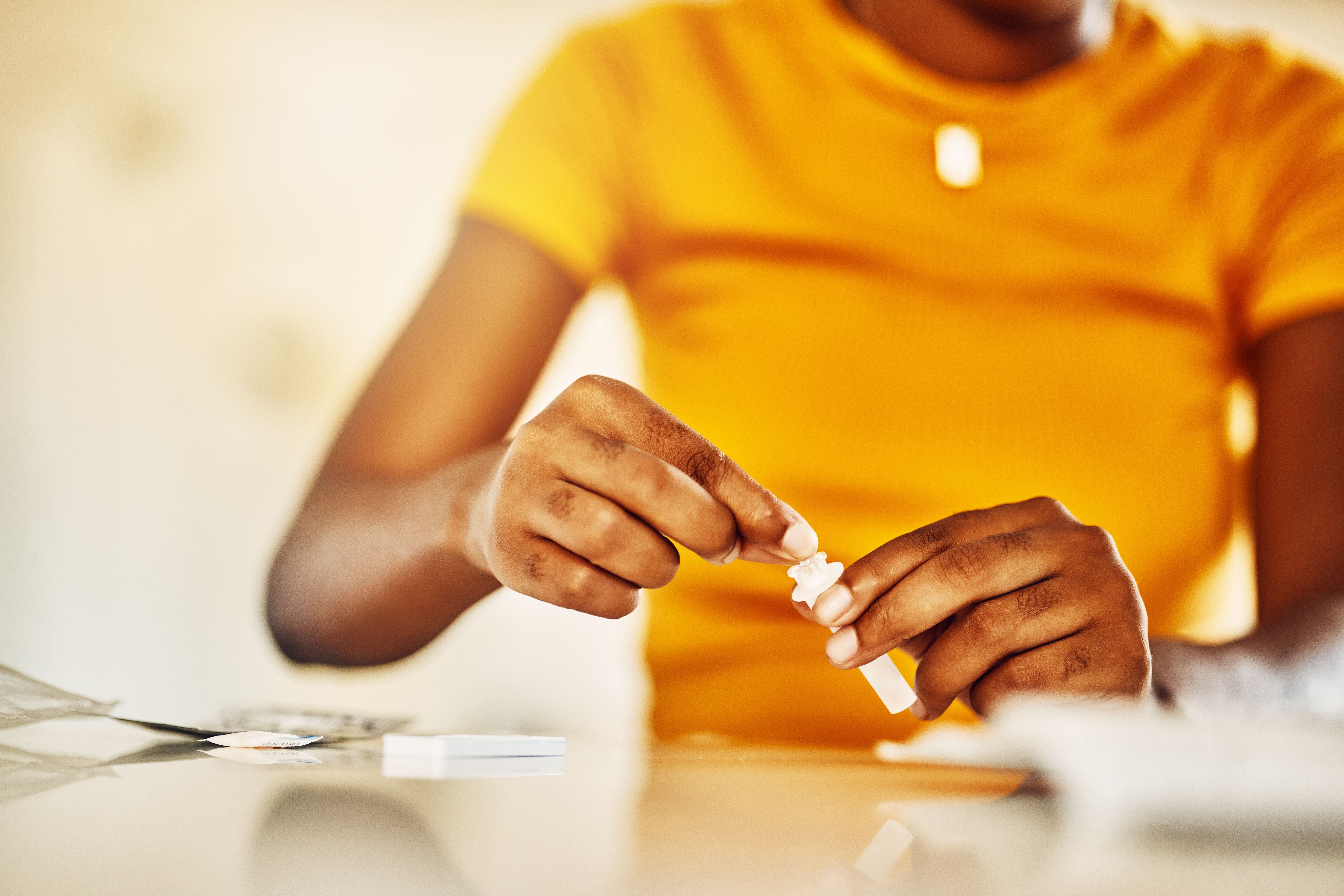Article
Third COVID-19 Vaccine Dose Yields Higher Immune Protection in PLWH
Author(s):
Results of a study among persons living with HIV (PLWH) in Hong Kong showed that a 3-dose primary COVID-19 vaccine series improved immune protection.
Surrogate virus neutralization testing (sVNT) for COVID-19 demonstrated higher levels of immune protection following a third vaccine dose compared with a second dose among persons living with HIV (PLWH), according to a research letter published in the CDC’s Emerging Infectious Diseases journal.
The study was conducted in Hong Kong, where both inactivated—used most widely worldwide—and mRNA vaccines are available for all eligible citizens. People in Hong Kong who are immunocompromised, including PLWH, have been prioritized for receiving a third dose or a booster dose 3 months after receiving the 2-dose primary COVID-19 vaccine series, regardless of type.
In this study, the authors used the sVNT to measure vaccine immunogenicity and compared immune responses after receiving 2 vs 3 doses of Sinovac Biotech’s inactivated CoronaVac vaccine.
The sVNT results were used to assess the extent of neutralizing antibody responses against SARS-CoV-2 based on antibody-mediated blockage of ACE2-spike receptor binding domain (RBD) interaction.
Between April 2021 and March 2022, a total of 122 PLWH who received CoronaVac were enrolled at 2 major HIV specialist clinics in Hong Kong that provided comprehensive HIV care. The authors measured sVNT after participants received their second or third vaccine dose and analyzed demographic and clinical data that were collected during routine clinical follow-up appointments at the HIV clinics.
The median (IQR) age was 49 (40-56.5) years, and 86% of participants were male. Additionally, all participants were receiving antiretroviral therapy (ART), and the median (IQR) most recent CD4 count was 564.5/μL (394-733/μL).
A total of 132 sVNT measurements were made in a median (IQR) of 48 (24-70) days after receiving the second vaccine dose and 33 (28-53) days after receiving the third dose. All measurements were made within 90 days of either dose.
Results were expressed as percentage inhibition with a cutoff of 30% for positive neutralizing response.
The sVNT measurements demonstrated a median (IQR) positive neutralizing response level of 89% (58%-95%) following the third COVID-19 dose, compared with 37% (24%-53%) following the second dose.
According to the study authors, this shows a significantly higher percentage of sVNT positivity following the third dose of CoronaVac.
They also noted how these results are similar to those of a similar study conducted in Brazil using the same vaccine.
After 2 doses, 28 individuals in the Hong Kong study had a median (IQR) sVNT of 48% (30%-58%) between 27 and 55 days after vaccination. Meanwhile, in the Brazil study, the median (IQR) sVNT was 46.2% (26.9%-69.7%) after 41 days following vaccination.
Further, the corresponding proportion of PLWH with sVNT positivity, defined as greater than 30%, was 79% after 27 to 55 days in the Hong Kong study, and 71% after 41 days in the Brazil study.
“Although effectiveness of inactivated COVID-19 vaccines has previously been shown in PLHIV, their moderate efficacy and waning immunogenicity after a standard 2-dose schedule pose challenges in developing vaccination strategy,” the authors said.
According to the authors, these results support the implementation of a 3-dose primary series for enhanced immune protection for PLWH.
Reference
Chan DPC, Wong NS, Wong BCK, Chan JMC, Lee SS. Three-dose primary series of inactivated COVID-19 vaccine for persons living with HIV, Hong Kong. Emerg Infect Dis. 2022;28(10):2130-2132. doi:10.3201/eid2810.220691





